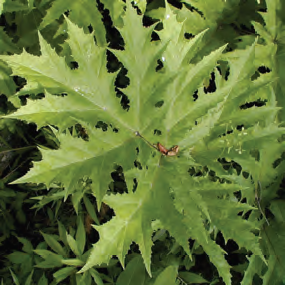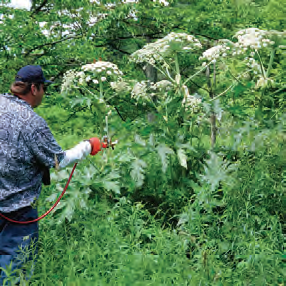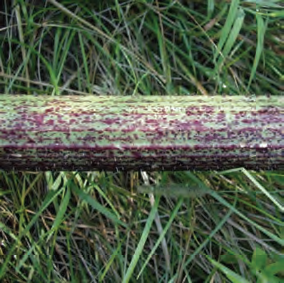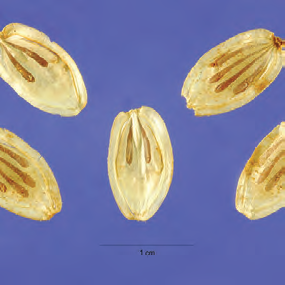Giant Hogweed
Heracleum mantegazzianum
Carrot Family (Apiaceae)
Perennial Herb
Flowers: Jun–Jul
Native Range: Caucasus Mountain region
Introduction: as an ornamental in the early 1900s
Mid-Atlantic Range & Habitats: Moist soils of roadsides, wood edges, streambanks, and floodplains. Reaches the southern limit of distribution in Maryland, New Jersey.


The massive plant can outcompete nearby vegetation, especially along streambanks, where growing conditions are ideal. The sap causes chemical burns after exposure of the affected skin to sunlight. Seed is dispersed primarily by water; the winged seeds thought to be able to float as far as 10 km before sinking. There is the potential for this species to hybridize with the native H. maximum, but no hybrids have been reported.

Quick ID
- Leaf form: Leaves coarsely toothed and deeply lobed, divided into 1–3 large leaflets
- Leaf hairs: Leaves hairy
- Flowering Heads: Flowering head 30–50 cm across, flat-topped
- Stem: Stem purple-spotted, hairy
- Fruit size: Fruits 9–11 mm long and 6–8 mm wide
More ID Tips
With an astounding height range of 2–5 m, Giant Hogweed towers above most similar-looking native species. Cow-parsnip can reach 3min height, and Angelica species typically only reach 2m or less. The flowering heads of giant hogweed contain 50 or more rays while the flowering heads of Cow-parsnip have 15–30 rays.


